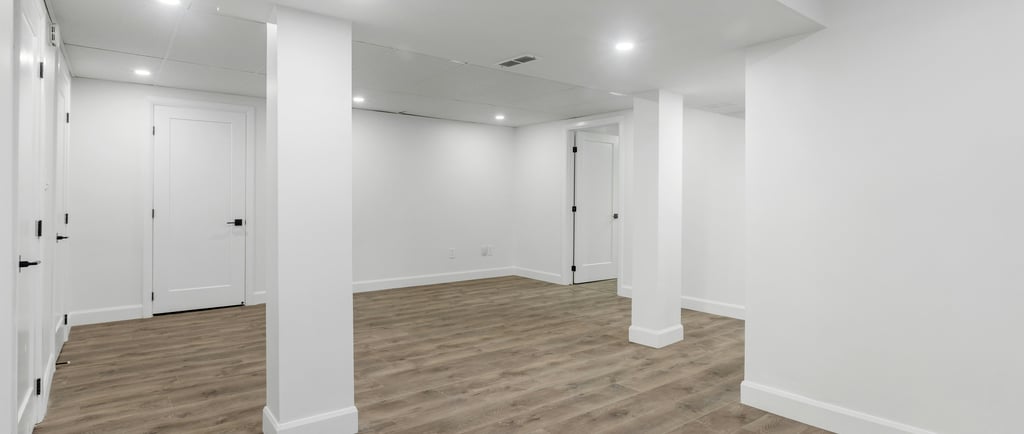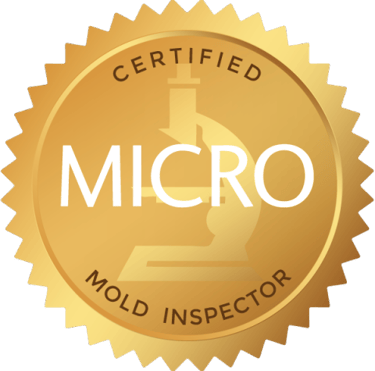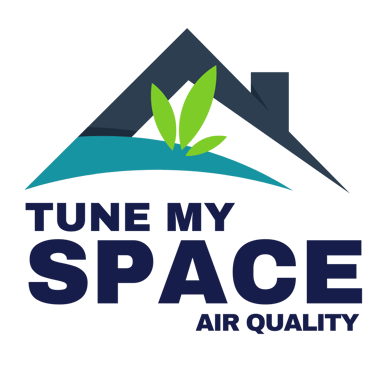How Mold Can Form in Your Finished Basement Behind Walls and Ceilings post
Rob Mezzanotte
4 min read


How Mold Can Form in Your Finished Basement Behind Walls and Ceilings
Basements are notorious for harboring mold due to their unique conditions. Even in a finished basement, where walls and ceilings are covered, mold can still become a significant problem. Here’s an in-depth look at how mold can form behind these hidden areas, along with practical advice on prevention and remediation.
Understanding Mold Growth
Mold thrives in environments that are damp, dark, and have organic materials to feed on. Here's how these conditions can develop in a finished basement:
1. Moisture Sources:
Groundwater Seepage: Basements are below ground level, making them susceptible to water seeping through the foundation during heavy rains or from high water tables. Even small cracks can allow water to enter, which can then be absorbed by drywall, wood framing, or insulation.
Humidity: Basements often have higher humidity because they are below grade and naturally cooler, which can cause condensation. Poor ventilation exacerbates this problem, trapping moisture inside.
Plumbing Issues: Leaks from pipes behind walls or under the floor can create ideal conditions for mold. A slow leak might go unnoticed for a long time, leading to substantial mold growth.
Condensation: Cold basement walls in contact with warm, moist indoor air can result in condensation. This is particularly common where insulation is inadequate or missing.
Flooding: Even one-time events like flooding from heavy storms or sump pump failures can introduce enough moisture to start mold growth.
2. Hidden Spaces:
Behind Drywall: The gypsum in drywall is a food source for mold. If the back of the drywall gets wet, mold can start growing without any visible signs from the outside.
Inside Insulation: If insulation becomes wet, it not only loses its effectiveness but also provides a moist environment for mold. Fiberglass or cellulose insulation can hold moisture, promoting mold growth.
Ceiling Structures: In basements with dropped ceilings, moisture can accumulate above the tiles or behind the grid system, especially if there's a leak or high humidity.
Carpet and Underlayment: If your basement has carpet, moisture trapped beneath can lead to mold growth, particularly at the edges near the walls.
3. Lack of Air Circulation:
Finished basements often have sealed surfaces which don't allow for natural air movement. This lack of circulation can keep moisture trapped against surfaces, leading to mold proliferation.
Preventing Mold in Your Basement
Waterproofing: Ensure your basement’s exterior walls and floor are waterproofed. Address any foundation cracks immediately. Install or maintain a good drainage system around your home.
Humidity Control: Use dehumidifiers to keep humidity below 50% RH. Good ventilation systems or even simple fans can help circulate air. Consider installing exhaust fans if the basement is prone to high moisture.
Regular Inspections: Check for signs of leaks, condensation, or water stains. Early detection can prevent mold from establishing. Use moisture meters if necessary to check hidden areas.
Proper Insulation: Insulate walls to prevent condensation. Ensure insulation is not blocking air vents or creating pockets where moisture can gather. Consider using vapor barriers to control moisture movement.
Plumbing Checks: Regularly inspect plumbing for leaks. Know where your pipes run to catch small problems before they become big ones. Consider leak detection systems for peace of mind.
Avoid Organic Materials: When finishing your basement, use mold-resistant materials for walls and ceilings where possible, like mold-resistant drywall or tiles instead of carpet.
Furniture and Storage: Keep furniture and boxes away from walls to allow air circulation. Use plastic storage bins instead of cardboard to reduce mold food sources.
What to Do if You Suspect Mold
If you notice musty odors, see visible mold, or have experienced water damage, it might be time to investigate further:
Professional Mold Testing: For areas you can't see, like behind walls, professionals can use moisture meters, thermal imaging, or air quality tests to detect mold growth.
Remediation: If mold is confirmed, professional remediation might involve:
Containment: To prevent spores from spreading.
Removal: Of affected drywall, insulation, or other materials.
Disinfection: Using mold-killing solutions.
Drying: Ensuring the area is completely dry before reconstruction.
Prevent Future Growth: After remediation, address the root cause to prevent recurrence. This might include waterproofing, better ventilation, or fixing plumbing issues.
Case Studies and Tips
Case Study: A homeowner in Richmond, Virginia, encountered mold issues after noticing water stains on the basement wall near the corner where a bookshelf was placed. Upon further investigation, it was discovered that there was a small crack in the concrete block behind the wall where water had been seeping through, particularly after heavy rainfall. Here’s what they did:
Investigation: They removed a section of drywall to inspect and found significant mold growth due to the hidden leak.
Repair: The crack in the concrete block was repaired using hydraulic cement to seal it from the outside.
Drywall Replacement: The affected drywall was removed, and new mold-resistant drywall was installed.
Mold Treatment: The area was treated with an EPA-registered mold-killing solution, and the space was thoroughly dried before being sealed up again.
Prevention: They installed a French drain around the affected area outside to divert water away from the foundation and added a dehumidifier to manage indoor humidity.
Tip: Use a hygrometer to monitor humidity levels. If levels are consistently high, it's a sign to take action.
Tip: After any water event, like a flood or significant leak, act quickly. Remove water, dry everything thoroughly, and consider professional services if there's doubt about complete drying.
Mold in a finished basement can be more than just an eyesore; it can affect health and structural integrity. By understanding how mold forms and taking proactive steps, you can keep your basement safe and mold-free. Remember, sometimes the signs aren't visible until it's too late, so vigilance and prevention are key.
TUNE MY SPACE LLC
Afton , Virginia 22920
support@tunemyspace.com




